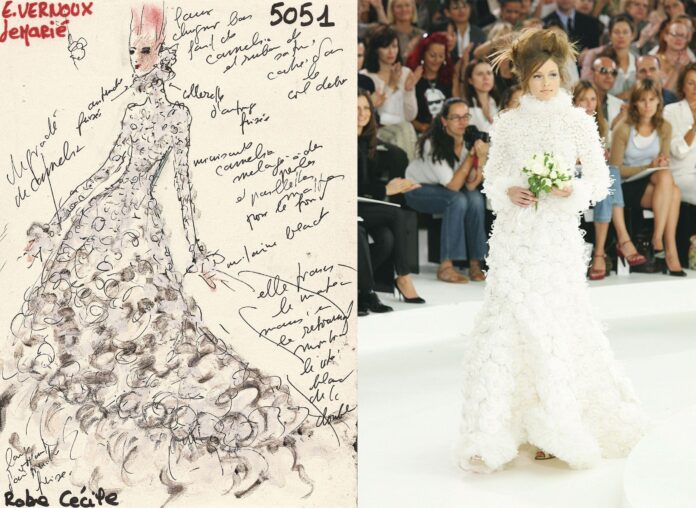The fashion designer Karl Lagerfeld may have been his own greatest creation. Born in Hamburg in 1933, he made his way to Paris in the 1950s to embark on an unparalleled career in high fashion that lasted until his death in 2019. A dyed-in-the-wool self-mythologiser and prevaricator—who never managed to confirm key details about his German origins—he was the creative force behind four fashion houses, most notably Chanel. Now, just a few years after his death, the Costume Institute at New York’s Metropolitan Museum of Art will cover the highlights of that career.
Rather than getting at the man behind the myth, Karl Lagerfeld: A Line of Beauty considers the designer’s process. The title and the organisation of the show refer to William Hogarth’s 18th-century treatise The Analysis of Beauty, which proposes a theory of aesthetics derived from an s-shaped line. The Met show will divide up Lagerfeld’s six-plus decades of fashion designs into Modernist-minimalist straight lines and romantic-historicist serpentines.

Karl Lagerfeld at work Image courtesy of The Metropolitan Museum of Art. Photo: Annie Leibovitz / Vogue /Trunk Archive
Forsaking chronology for what Andrew Bolton, the curator in charge of the Costume Institute, regards as an essayistic approach, the show will emphasise Lagerfeld’s “works rather than his words”. It will also elevate to the status of applied art Lagerfeld’s remarkable sketches, which were key to his working life. Something between cryptic office memos, meant for his indispensable head seamstresses, and apparent flights of fancy, these sketches, often in their original form, will be exhibited with the clothes they fostered.
For a Chanel 2005/06 collection, Lagerfeld designed a fantastical wedding dress covered with silk-and-feather camellias. The reproduced sketch, with odd notations and a spiky-haired model, is like a dreamscape version of the real thing.
Starting in the mid-1960s, Lagerfeld left his mark on Chloé. In an apparent co-mingling of straight and serpentine lines, he designed a silk-crepe dress for the fashion house’s 1973 spring/summer collection. The dress featured stark triangles on the bodice and sinuous commedia dell’arte figures on the skirt; the analytical sketch and a version of the dress will be on display together.

A 1973 Rachmaninoff dress designed by Lagerfeld for Chloé, featuring commedia dell’arte figures
Photo © Julia Hetta, courtesy of the Metropolitan Museum of Art
Bolton’s detective work led him to find Lagerfeld’s inspiration for the bodice in the classical tiles of the fashion designer Jeanne Lanvin’s bathroom floor. That legendary 1920s Parisian room, now in the collection of Paris’s Musée des Arts Décoratifs, is included in the catalogue, along with other citations of Lagerfeld’s eclectic visual sources.
Although not overly focusing on his biography, the exhibition will include video footage of the designer. In one instance Lagerfeld can be seen laughing, while in another busy sketching a picture of none other than himself.
• Karl Lagerfeld: A Line of Beauty, Metropolitan Museum of Art, New York, 5 May-16 July

























